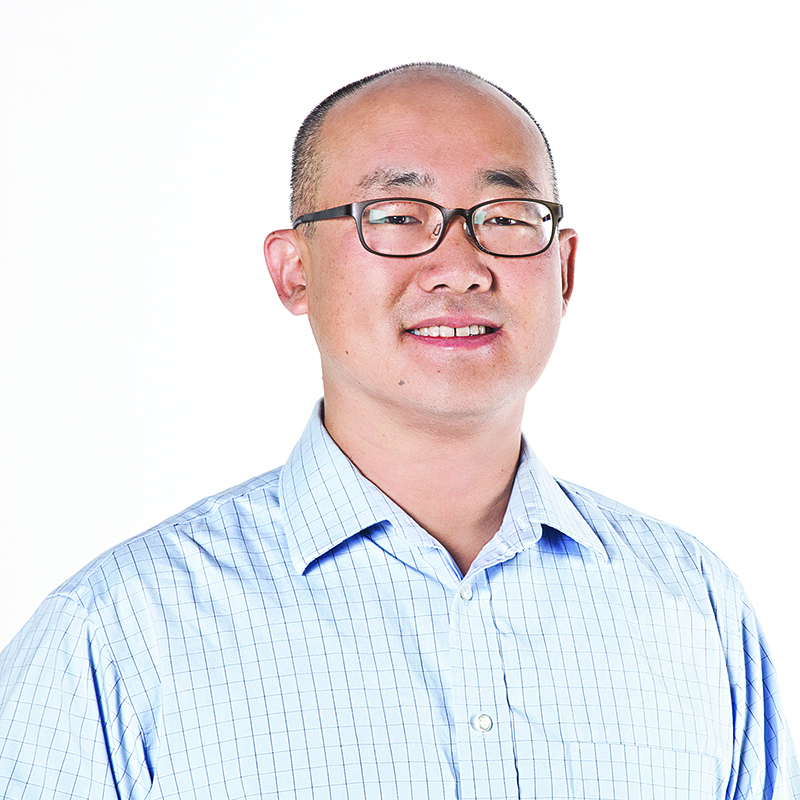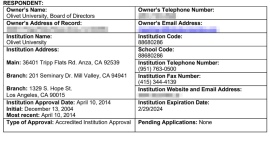

Pastor Ray Chang is the lead pastor of Ambassador Church, located in Brea, CA.
"If heaven is going to be a community with all nations, all tribes, all people, then why can't the church be that community? Why can't we reflect what heaven is going to be like?"
These are some of the questions that Pastor Ray Chang had pondered when he first felt compelled to plant a multiethnic church. Today, Chang is the lead pastor of Ambassador Church, located in Brea, CA, a congregation of some 500 people who are Asian, White, Latino, and African American.
But Chang's ministry career wasn't in a multiethnic context from the beginning. Prior to launching Ambassador Church, Chang has been both in the Korean American church context and a primarily White church context. He says that it was while serving in a homogeneous context that he felt convicted to step out into the multiethnic one. It started with a conversation he had with a young adult member of an English-speaking, Korean American congregation he was leading at a Korean immigrant church.
"I asked him, "Hey, why don't you bring one of your co-workers to church?' And he said to me, "Pastor Ray, I can't. This is a Korean American church. They'll feel uncomfortable,'" Chang recalled. "He was genuinely concerned that the people he would invite would not fit in. And it really struck me."
The thought of having a church in which members would feel free to invite anyone and everyone around them to church was the initial spark that compelled Chang to plant Ambassador Bible Church in Virginia in 1997, and then to plant Ambassador Church in California in 2003. Over the years, Chang says that he has discovered even more advantages to being a part of a multiethnic congregation. For instance, he said, being a part of a multiethnic congregation increases possibilities for mission work.
"Here's how a lot of churches do missions," Chang said. "They take their youth groups and college groups. They go to Peru or they go to Mexico for a few days. They go to China or Thailand. But there's very little connection."
"Instead of just going to Thailand, why not reach Thai people here, and take them with you to Thailand? Why only think about missions overseas?" said Chang. "That's the advantage of being in a multiethnic church. You have opportunities to do greater evangelism and broader mission work."
But doesn't being a part of a multiethnic church diminish each individual's ethnic culture? Chang said that that's a common counterargument to having a multiethnic congregation, but that he has experienced otherwise. In some ways, the multiethnic context even "enhances" each culture, said Chang, as being surrounded by people of different cultures allows each individual to appreciate his or her own ethnic culture even more, while also appreciating that of others.
"The Korean American members, they still listen to K-Pop, they still go to Korean restaurants," he said as an example. "But now, they're also taking their Hispanic friends from church with them, and those Hispanic friends are also taking the Korean members to Hispanic restaurants."
"In that way, we're constantly learning from each other," said Chang.
Most importantly, a multiethnic congregation serves as a way to reach more people for the gospel.
"For me, planting a multiethnic church had nothing to do with political correctness," he explained. "It had everything to do with the gospel. What is the ultimate expression of the kingdom of God? Revelations 5 and 7 says that it will be all nations, all tribes, all people."
"We could limit ourselves by just reaching Korean Americans, but God has called us to be in a nation where there's so much diversity. Why not reach everybody for the gospel?"
Chang clarified that he believes all types of churches are necessary, and that he isn't advocating for all churches to become multiethnic. But he also saw the need for more Korean American pastors to venture out to lead or plant multiethnic churches.
"We need all types of churches for all people," he said. "We need a first gen church. We need a church for both first and second gen. We need a church just for second gen, and we need a multiethnic church. We need all of these churches. But the majority are stuck in the middle or stuck in the first."
Chang says that he has "never met a pastor who said he doesn't want to have a multiethnic church." Still, many Korean American pastors are leading congregations that are primarily Korean or Asian American, Chang said. The key to actually realizing a multiethnic congregation is intentionality.
"If you think about a river, it naturally flows downstream. The natural flow of ministry and of life is that we tend to be homogeneous, and we tend to value comfort and security. That's human nature; that's the downstream of life," Chang said.
There are several steps church leaders must take to "go upstream," and to be intentional towards building a multiethnic church, Chang said. First, they must "state the vision." Ambassador Church, for example, has the three core parts of its vision stated in its logo, website, pamphlets, and programs: "Multiethnic. Missional. Multiplying."
"If you don't state it, the natural downstream is that people are going to bring people who are just like themselves," Chang said.
Second, they must "staff the vision." Though Ambassador Church started out with five Korean American staff, as some began to leave to plant their own churches, Chang and the remaining leaders made sure to bring on people of other ethnic groups.
Third, they must "stage the vision." "If you want to be a diverse church but everyone on stage is Korean American, you're not going to have a multiethnic church," Chang explained.
There's also the problem of the congregation members just hanging out with people of the same ethnic group. Interacting across cultural and ethnic lines must start with the leadership, said Chang.
"If we don't intentionally have relationships in the leadership with people that are diverse, then you can't expect the congregation to have those relationships," he said. "We have to model it - it's the best way to teach our people how to be a multiethnic church."
"And getting along across cultural lines is not just about this superficial getting along. It's about saying, our identity is in Christ first. We're family. To be a multiethnic church, you have to think of it as family."


















